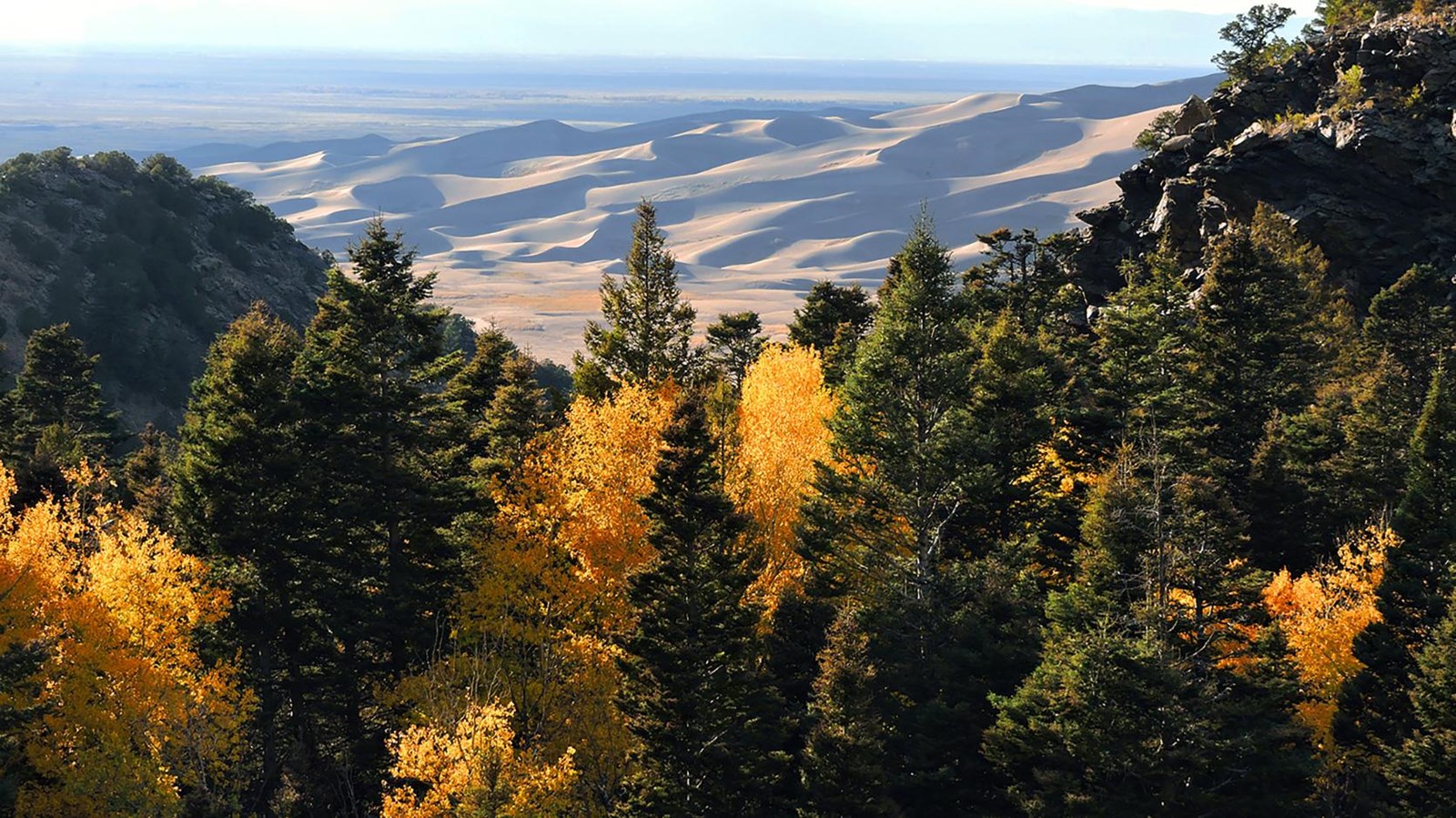Last updated: May 1, 2025
Place
Mosca Pass

NPS/Patrick Myers
Parking - Auto
Just above the dunefield are forests of aspen, pine, fir, and spruce. The easiest hiking access to forest in the national park is in Mosca Pass, on the Montville Nature Trail and Mosca Pass Trail. On these trails, you are walking in the footsteps of Pleistocene mammoth hunters, indigenous tribes, diverse settlers, American explorers, and 19th century African American Buffalo Soldiers.
Montville Nature Trail
This is the easiest, most popular forest hike in the park. In summer, keep this hike as an option for afternoon as an escape from the heat of the dunes. Walk along a shady forested trail named for a late 1800s settlement, comprising 20 houses in its heydey. Rest near the trail's highpoint, where you'll find views of Mt. Herard, the dunes and the valley. A booklet available at the trailhead provides numbered stops to learn about this historic community and the mountain pass above it.
Round Trip Hike: 0.5 mile (1 km)
Elevation Gain: 200 feet (60 m)
Average Time: 30 minutes
Mosca Pass Trail
This trail continues past Montville Nature Trail, following a small creek to the summit of a low pass in the Sangre de Cristo mountains. Though views are limited, it has shady aspen and evergreen forests.
Round Trip Hike: 7 miles (11 km)
Elevation Gain: 1400 feet (427 m)
Average Time: 3.5 hours
